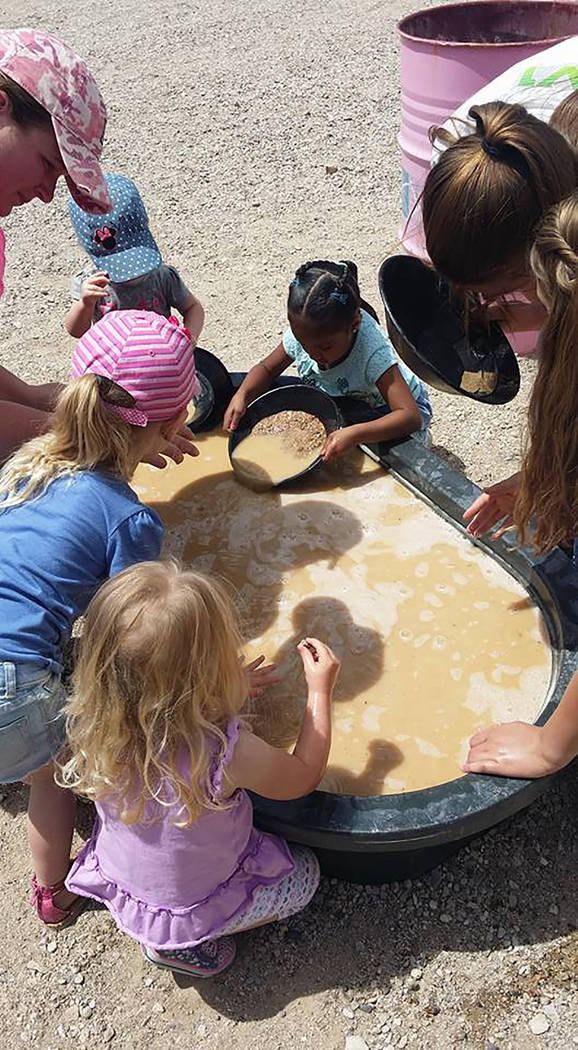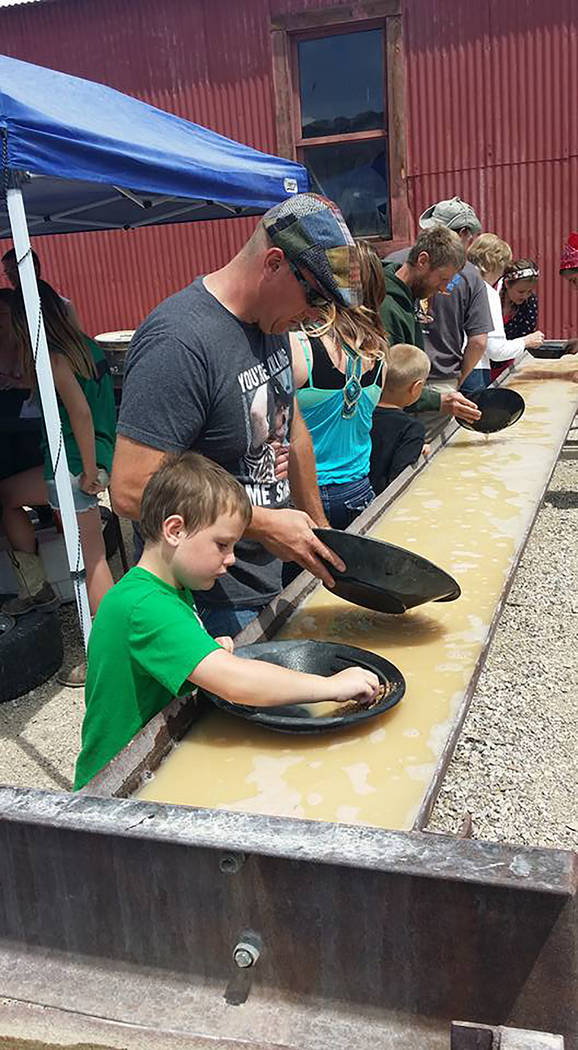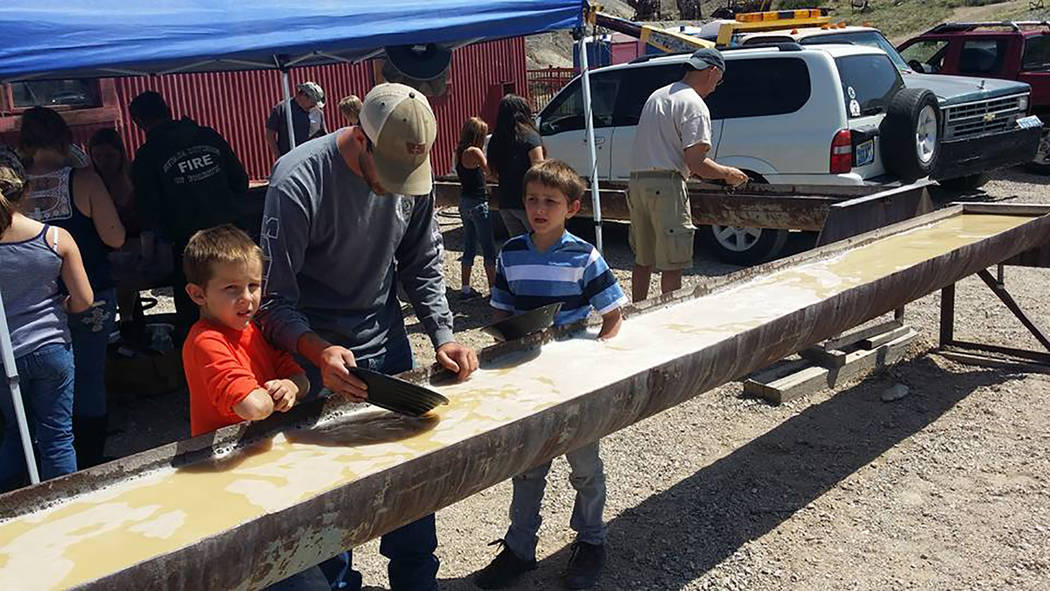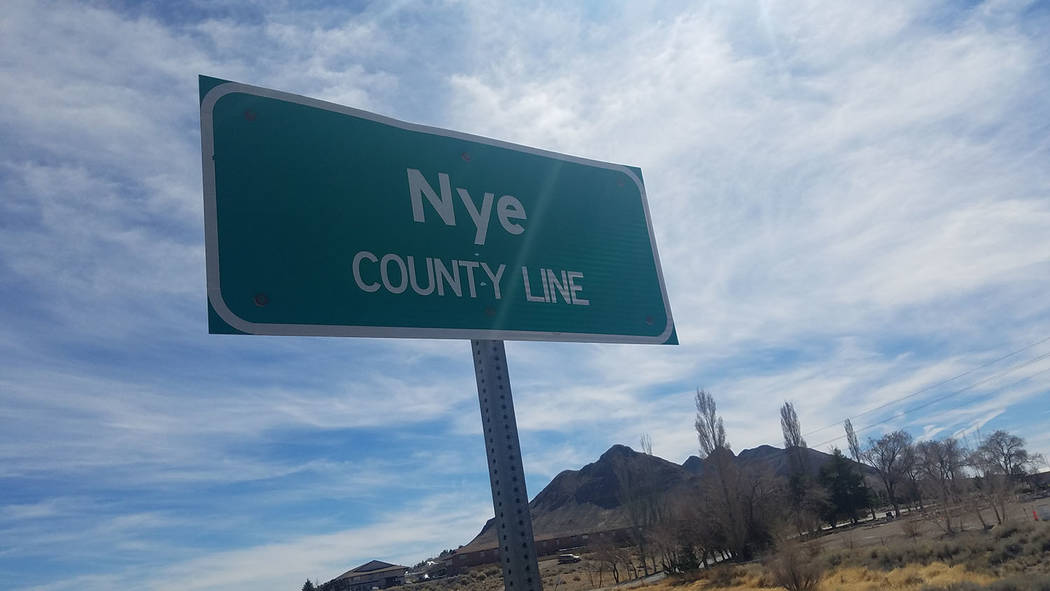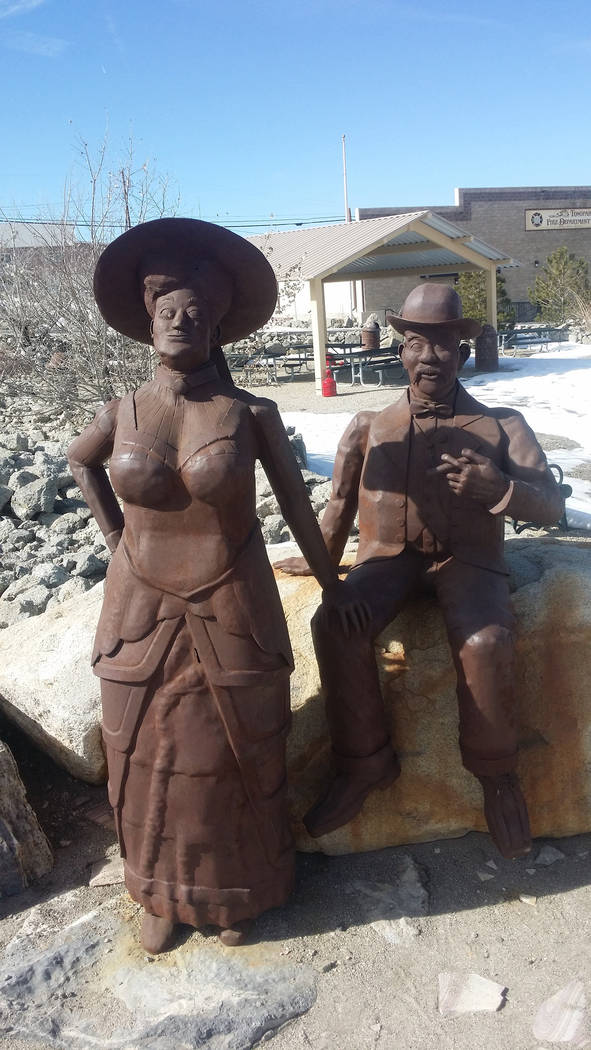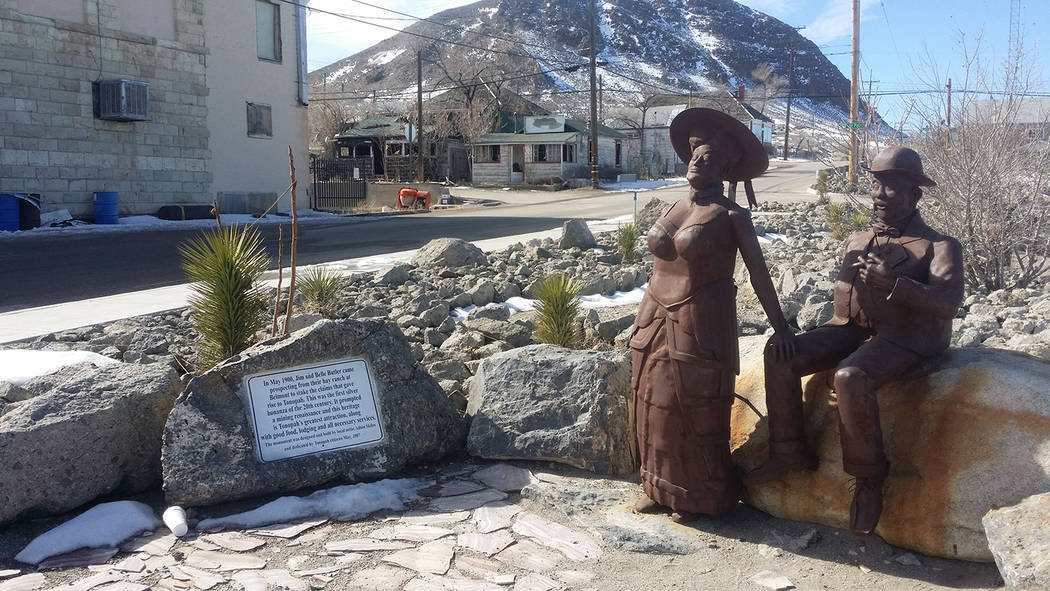A look at the historic quest for riches in Nye County region
The American nation’s settlement of the far western states was closely associated with the discovery of many significant mineral deposits, notably gold and silver but also lead, zinc, and copper.
The possibility of finding a valuable mineral deposit and claiming ownership attracted large numbers of wealth-seekers, and this influx of population led to the formation of communities and the development of farms, ranches, and transportation to serve the newcomers.
The growth of our great American West was underpinned by large numbers of courageous men and women who searched for and occasionally found a big mineral deposit that would transform life in the area. Those who hit it big became role models for those who continued to hope to find the big bonanza.
An interesting aspect to this historic quest for riches was the manner in which rich deposits of valuable minerals were actually discovered. It was often not quite the way one might think.
Two ways of finding
There appear to be two ways in which large, valuable mineral deposits were discovered in the American West. The first was through direct activity by a prospector seeking to reveal the presence or absence of a desirable mineral deposit. Prospectors would focus their direct efforts on a specific location under examination, with the desired outcome discovery of a valuable mineral deposit.
The second means of discovery was through what could be called accidents.
Here the prospector’s immediate efforts were not specifically directed toward finding a valuable mineral deposit but were focused on some unrelated activity.
Finding a valuable mineral deposit was secondary to what was on the discoverer’s mind at the time. The prospector, in effect, stumbles upon his or her new discovery.
Two good examples
A good example of the first method can be seen in the 1870 discovery by Dr. James Gally and his partner, Martin Van Buren Gillett, of a huge deposit of lead, silver, and zinc in Jerusalem Canyon, 12 miles south of Hot Creek in the Hot Creek Range in northern Nye County.
The deposit was an enormous vein, four to eight feet wide, that ran for 1600 feet along the surface.
The discovery led to the founding of the town of Tybo, for decades one of Nye County’s most important towns. The 2G Mine established to mine the huge vein was in operation as late as the 1970s.
Dr. Gally and his partner’s discovery of the 2G vein seems to have been direct; they sold a major part of their operation in 1874 “for a handsome sum of money.”
The very best example of the second method, discovery by accident, was James W. Marshall’s history-altering discovery of gold at Coloma on the South Fork of the American River about 40 miles northeast of Sacramento, California, in January 1848. Marshall was an employee of John A. Sutter, who was building a sawmill on his property. Water was being diverted overnight from the river to the mill.
The next morning the water flow had deepened the diversion channel and yellow metal flakes were visible in it—gold!
Marshall’s accidental discovery soon triggered the greatest gold rush in world history, the California Gold Rush. Its impact diffused throughout the American West and soon resulted in the founding of the state of Nevada.
Discovery of gold in California would no doubt have occurred sooner or later, and in fact had taken place several times before, but history chose Marshall’s path to the future.
Other Nye County
discoveries
Nye County has been the site of the discovery of a number of other large important mineral deposits, including those at Tonopah, Manhattan and Round Mountain.
Tonopah
Jim Butler, a Nye County resident, is usually given credit for making the discovery that led to Tonopah’s founding in 1900. As I wrote in a 2012 column on the topic for the Pahrump Valley Times, the true story of what happened did not come out until June 1922.
At that time Jim was in Tonopah and got word from Sacramento that Belle Butler, his wife, had died. He immediately called a meeting with local newspaper reporters and related what he said was the true story of Tonopah’s discovery.
It seems Jim and his wife had been traveling by buckboard from their home in Monitor Valley. They had camped north of what became Tonopah, and overnight their burros strayed off.
In their search for the animals they separated; Jim headed south toward Divide and Belle rested at a great rock outcropping at what is now known as Mount Oddie in Tonopah. There she picked up an interesting-looking rock. When Jim returned, having found the burros, she showed the rock to him.
“Jim, what do you think of this rock?” she asked.
He looked at it and answered, “The greatest mineralized rock in the world.”
And the rest, as they say, is history, with Jim getting the credit for Belle’s accidental discovery. How would the history of central Nevada read if Belle had chosen a different place to rest?
Manhattan
Mining activity in the Manhattan area dates to 1866. The contemporary town of Manhattan was founded in 1905. Accounts of how gold was discovered that led to the creation of the town vary.
According to one version, in 1905 John C. Humphrey, whose family had a ranch at Peavine, was out looking for cattle and found a rock that looked like it contained gold. He staked five claims and gave E.E. Sayler a one-half interest to have his sample assayed.
Weeks later, the owners returned to do some location work. At lunch, they broke a sample off a ledge on the claim that proved to be high-grade gold. The Manhattan boom was on—again, as a result of stumbling upon gold rather than looking for it.
Round Mountain
Details on the discovery of the enormous deposit of gold at Round Mountain are confusing.
One version I like credits Laura Stebbins, daughter of a local cowboy named John F. (Jack) Stebbins, who owned a small ranch at the mouth of Jefferson Canyon two and a half miles from what became the town of Round Mountain. One day, Laura was out looking for a milk cow that had strayed.
In her search, she found a pretty rock and took it home. When her father saw it he asked her where she found it. He checked out the site and the rest is history!
I suspect that the two types of discoveries suggested here for prospecting apply to most, if not all, quests for understanding, regardless of the topic and that all searches of the unknown basically amount to prospecting.
Bob McCracken has a doctorate in cultural anthropology and is the author of numerous books in the Nye County Town History Project.


